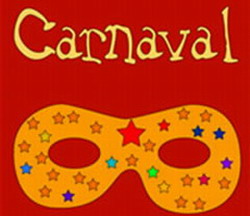Havana's Carnival, the oldest popular festivity
- Submitted by: admin
- Travel and Tourism
- Arts and Culture
- Dance
- Entertainment
- Music
- 07 / 31 / 2007

It celebrates the 45th anniversary of Cubas Communist Youth League UJC and the integration among Latin American peoples.
Fantastic parades of skilful folk music dancers of comparsas - troupes of street bailadores performing spectacular choreographies - and congas - generally each neighbourhood organizes a performing group that rehearses dances and songs for months before the big event takes place.
Add to this the cheerful and exciting atmosphere the city exudes and the events calendar crammed with festivals and celebrations of special dates like the 3rd of August dedicated to Cuban children. The great inaugural festivity will be on July 28 at the Anti-imperialist Tribune José Martí.
Havana visitors coming from all corners of the world mingle with its residents to enjoy the event. From Galiano street to Calle 23 people packed every open plaza, park anda areas specially decorated for the occasion.
Oldest and most well-known comparsas such as "Los componedores de batea", "Las bolleras", "La bollera", "La sultana", "La jardinera", "Los marqueses de Atarés", "La Danza de los leones" - of Chinese origin - and "El Alacrán" (1908) always bring their particular brand thus identifying each group and each barrio. Humble people gave birth to these cultural expressions into which they put all their creativity and imagination to dance with the rhythm of the drums.
Formerly "Los marqueses de Atarés" ensemble was made up of rumberos, santeros and abakuá, all organized. What we know about comparsas is that their members remained anonymous at the time, when they were prohibited the same as were other expressions of the Afro-Cuban culture.
Also present in the great fete are some contemporaneous dancing groups; Los Guaracheros de Regla, la Giraldilla, the University Student comparsa, Los Caballeros del Ritmo, Los Jóvenes del Este and La Mazucamba. The program even attracts representatives of some educational institutions such as the National Art School currently celebrating its 45th founding anniversary.
Again the general celebration features a number of particular fiestas for the 70th anniversary of the comparsas Los Marqueses de Atarés and La Bollera and the 35th of the Guaracheritos de Regla. Day and night the carnival 2007 jury will be busy watching all type of choreographies to come to the awarding evening program on the 12th.
Havana carnival is rooted in the earliest African ethnic groups dated back to 1760. Its estimated that by the end of 18th century fourteen distinct "nations" had preserved their identity in the mutual aid associations and social clubs known as cabildos, societies of free and enslaved blacks from the same African "nation," which later included their Cuban-born descendants.
The cabildos not only preserved specific African practices, their members also creatively reunited many regional African traditions. Neighbourhood groups used to take the streets in June and July in Masked celebrations known as fiestas de mamarrachos,.
Havana cabildos held public celebrations on the Dia de los Reyes, or Epiphany - January 6- thus creating that city's first Black carnival, an opportunity to display their African dresses, dances and musical instruments.
Over the years, Carnival features floats, allegorical dances, figures from contemporary popular culture, and dance band but its African roots keeps up and going. The first Havana carnival was established in 1902.
The eastern city of Santiago de Cuba is famous among many other events for its hot street carnivals and los Hoyos conga, whose whirling rhythms sweep out to the streets crowds of people.
This is an important time to show off skill and talent and get much fun with friends and family. Havana carnival also brings in outdoor street fairs and concerts featuring Cubas top music bands.
Source: By Maria del Carmen Vasallo, CubaSi
Comments